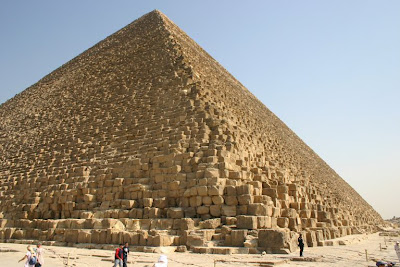The Seven Wonders of the World (or the Seven Wonders of the Ancient World)
refers to remarkable constructions of classical antiquity.
The Greek conquest of much of the known world in
the 4th century BC gave Hellenistic travelers access to the civilizations of the Egyptians, Persians and Babylonians. Impressed and captivated by the landmarks and marvels of the various lands,
these travelers began to list what they saw. Such a list of these places made
it easier to remember them.
Scope of the lists to seven entries was attributed
to the special magical meaning of the number. Geographically, the list covered
only the sculptural and architectural monuments of the Mediterranean and Middle Eastern regions, and then
thought to encompass the "known" world for the Greeks. Hence, extant
sites beyond this realm were not considered as part of contemporary accounts.
The primary accounts, coming from Hellenistic
writers, also heavily influenced the places included in the wonders list. Five
of the seven entries are a celebration of Greek accomplishments in the arts and
architecture (the exceptions being the Pyramids of Giza and the Hanging Gardens
of Babylon).
Among all, the Of Antipater's wonders, the only
one that has survived to the present day is the Great Pyramid of Giza. The
existence of the Hanging Gardens has not been proven, although theories abound.
Records and archaeology confirm the existence of the other five wonders. The
Temple of Artemis and the Statue of Zeus were destroyed by fire, while the
Lighthouse of Alexandria, Colossus, and tomb of Mausolus were destroyed by
earthquakes. Among the artifacts to have survived are sculptures
from the tomb of Mausolus and the Temple of Artemis in the British Museum London.
Egypt - The only remaining of the actual
7 wonders of the world.
It is the oldest of the 7 Wonders of the
Ancient World, and the only one to remain largely intact. It is believed the
pyramid was built as a tomb for fourth dynasty Egyptian Pharaoh Khufu (Cheops
in Greek) and constructed over a 20-year period concluding around 2560 BC. The
Great Pyramid was the tallest man-made
structure in the world for over 3,800 years. Originally the Great Pyramid was
covered by casing stones that formed a smooth outer surface; what is seen today
is the underlying core structure.
Ref : Wikipedia




No comments:
Post a Comment